Who is The Greatest Pharaoh of all Time? (It’s Not King Tut)
If you had to name a battleship after a pharaoh who represents power—which pharaoh would you choose?

And it came from Brother Mobali Makasi during our live podcast interview in Paris, France.
That's the kind of question that cuts right to the heart of what really matters.
But when it comes to the greatest pharaoh, I'm prejudiced.
And my prejudice comes from a very specific place—fifteen years of excavating 25th Dynasty tombs in South Asasif on the West Bank of Luxor, Egypt.
I spent over a decade and a half digging through 2,700 tons of debris, cataloging over 34,000 fragments, and reconstructing the temple tombs of Kushite nobles who served under one of the greatest African dynasty ever to rule Kemet (Egypt).
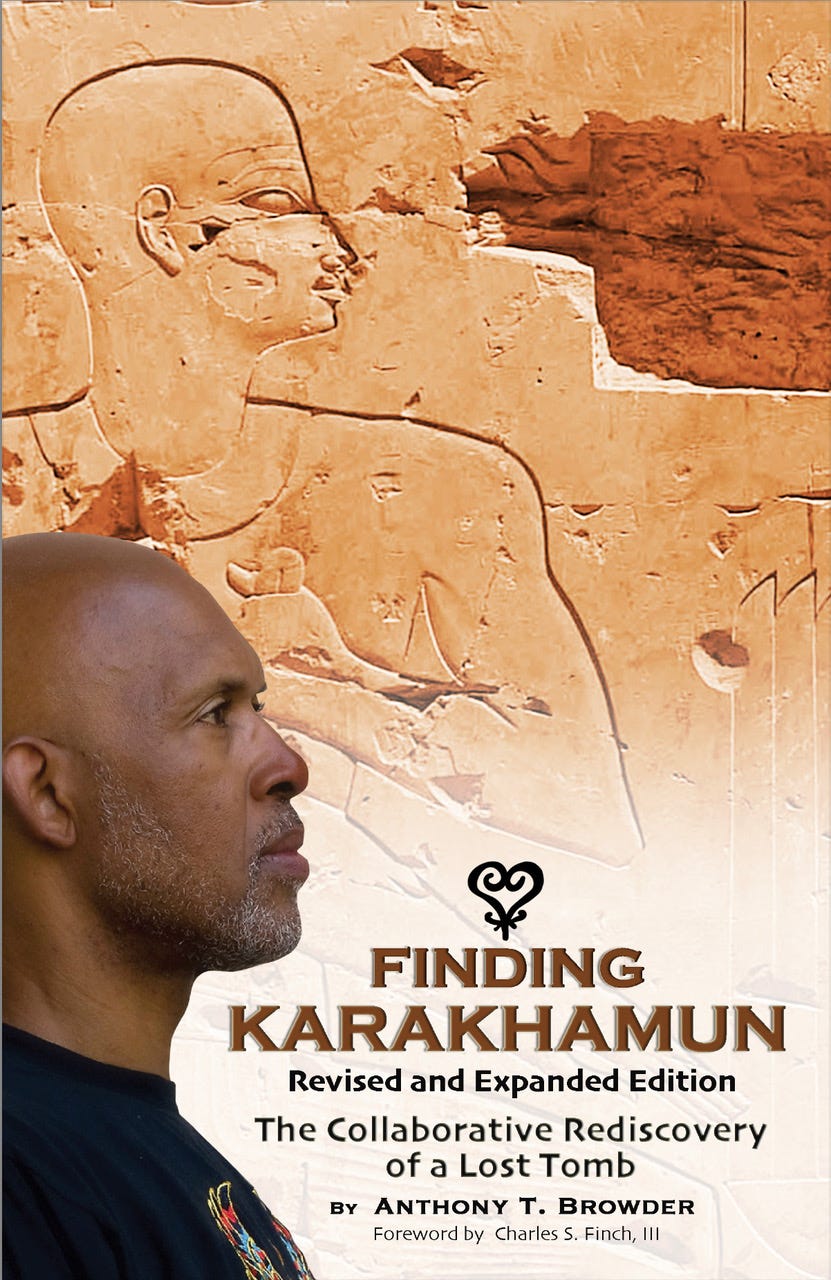
When you've held pieces of limestone carved 2,700 years ago in your hands, walked through pillared halls that ancient Africans built, and stood before the spirit door of Ausar in Karakhamun's tomb—a door that hadn't been accessed for over 2,000 years—you develop a profound appreciation for the dynasty these men served.

Meaning, I can only have one answer.
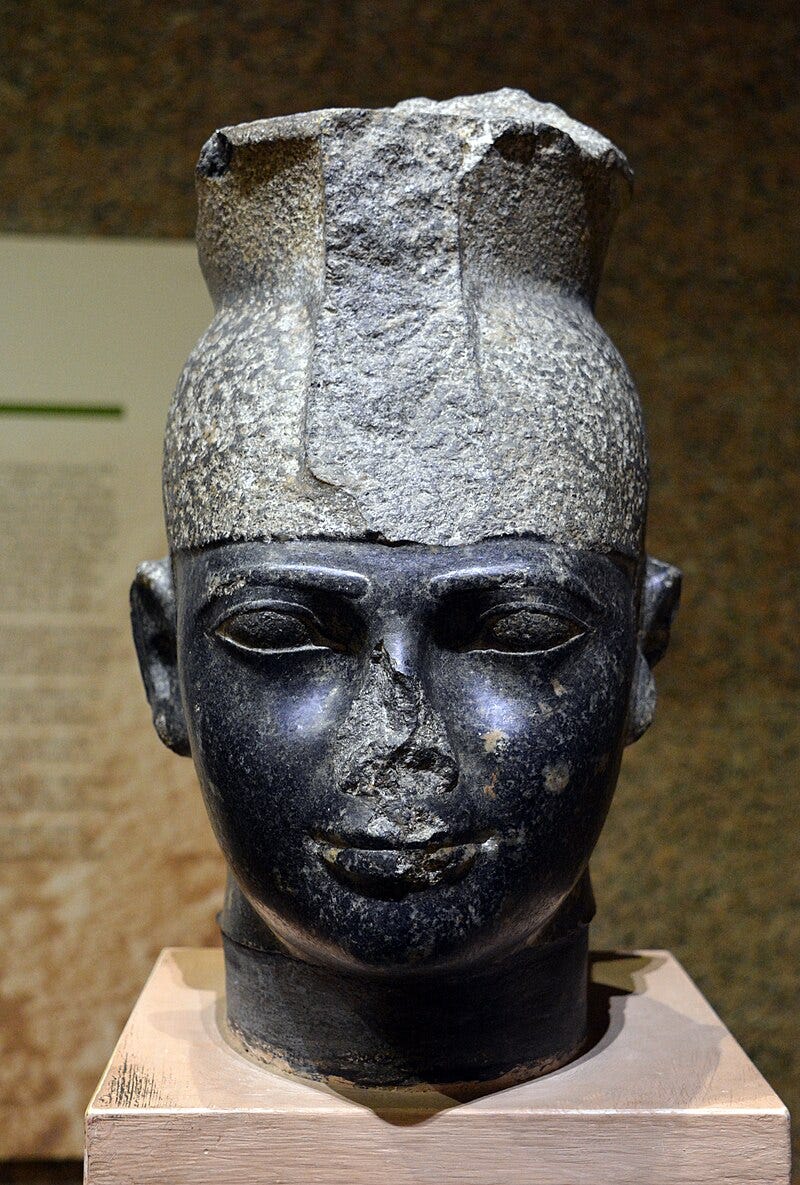
And I told Mobali exactly why.
Taharqa was the last major king of the 25th Dynasty, and he represents everything a pharaoh should embody.
He understood that power means nothing without purpose, that strength means nothing without the will to use it for the protection and prosperity of your people.
• He restored 2,000 years of Kemetic history and culture
• He controlled one quarter of the African continent and the so-called Middle East
• He's the only king of Kemet mentioned by name in the Bible
• He personally saved Jerusalem from the Assyrians
But let me tell you what the history books often leave out.
Taharqa ruled during a renaissance that put Kemet back on top of the world.
The 25th Dynasty didn't just conquer Kemet—they restored it.
When Taharqa took the throne in 690 BCE, he inherited an empire that stretched from the Mediterranean Sea to the heart of Africa. The Nile Valley empire was as large as it had been since the New Kingdom, over 500 years earlier.
This was, as John Henrik Clarke said, ‘Africa's last great walk in the sun’.
The 25th Dynasty was the last time in recorded history that African people were unquestionably the most powerful human beings on the planet.
During my excavations, I've seen firsthand the level of craftsmanship and artistry that flourished under the 25th Dynasty. The temple tombs I've excavated in South Asasif are confirmation of African genius and represents a civilization at its peak.
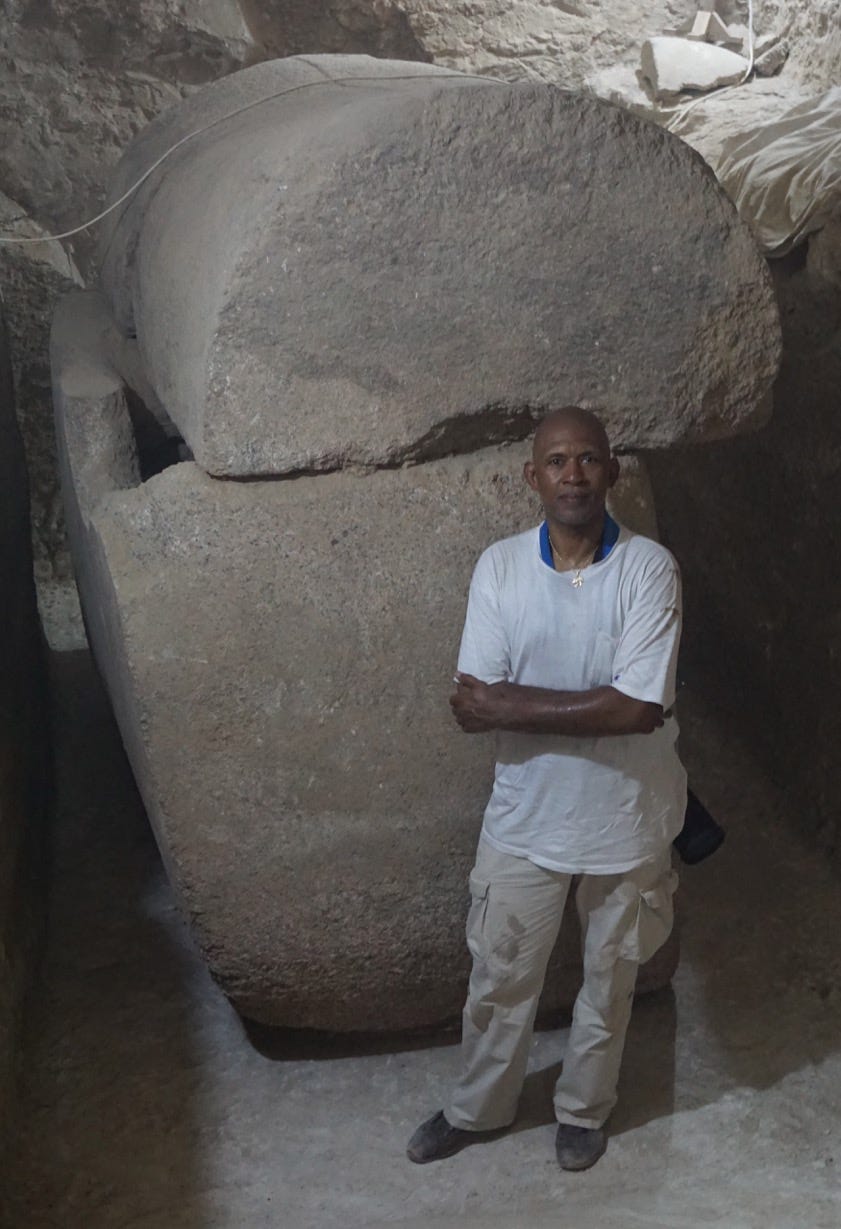
Taharqa's building projects were legendary.
Taharqa restored existing temples throughout the Nile Valley and built new ones that still stand today.
His additions to the Temple at Karnak are among the most impressive architectural achievements in human history.
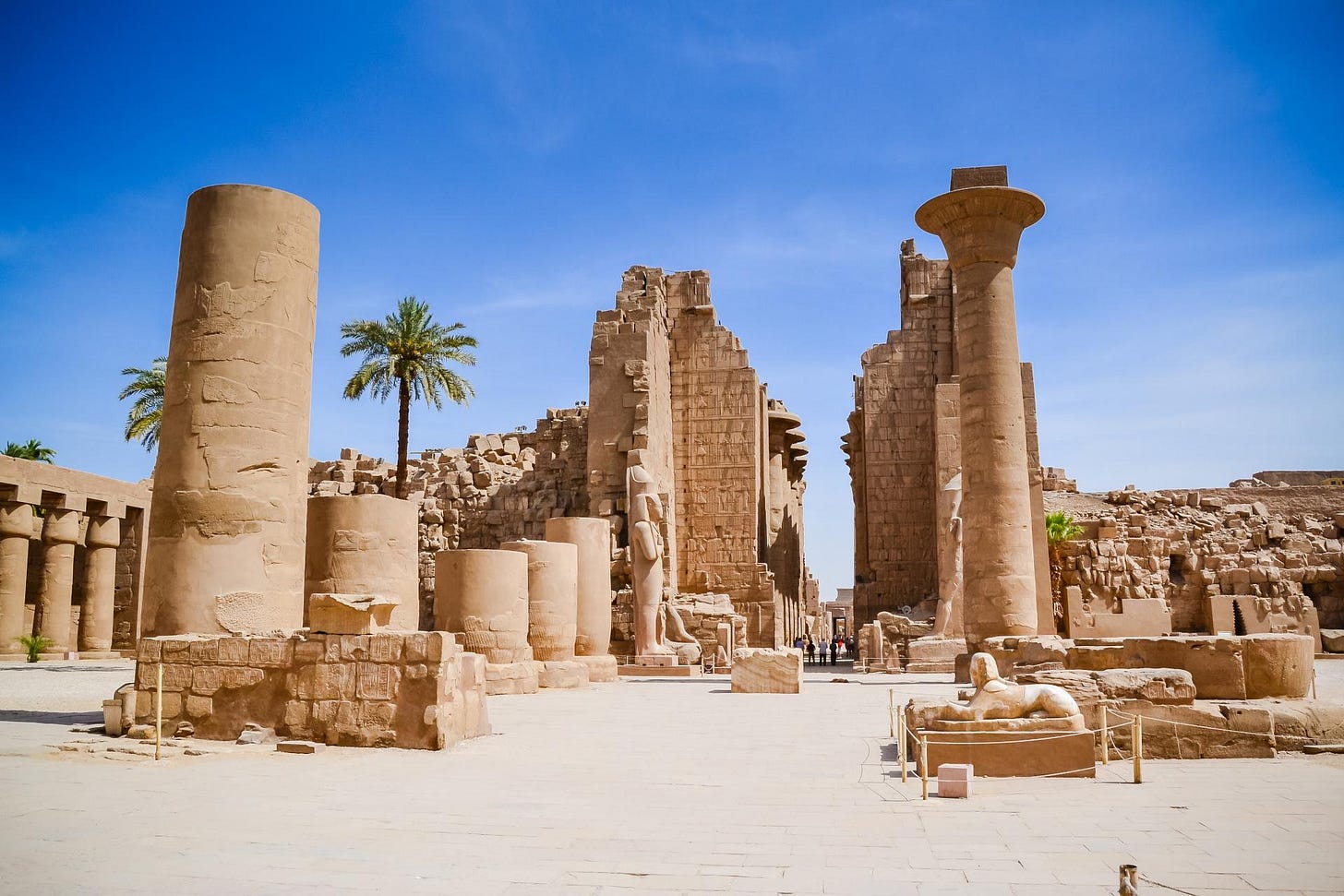
The new temple he built at Kawa and the temples at Jebel Barkal were statements of power and confirmation that African civilization was alive, thriving, and dominant.
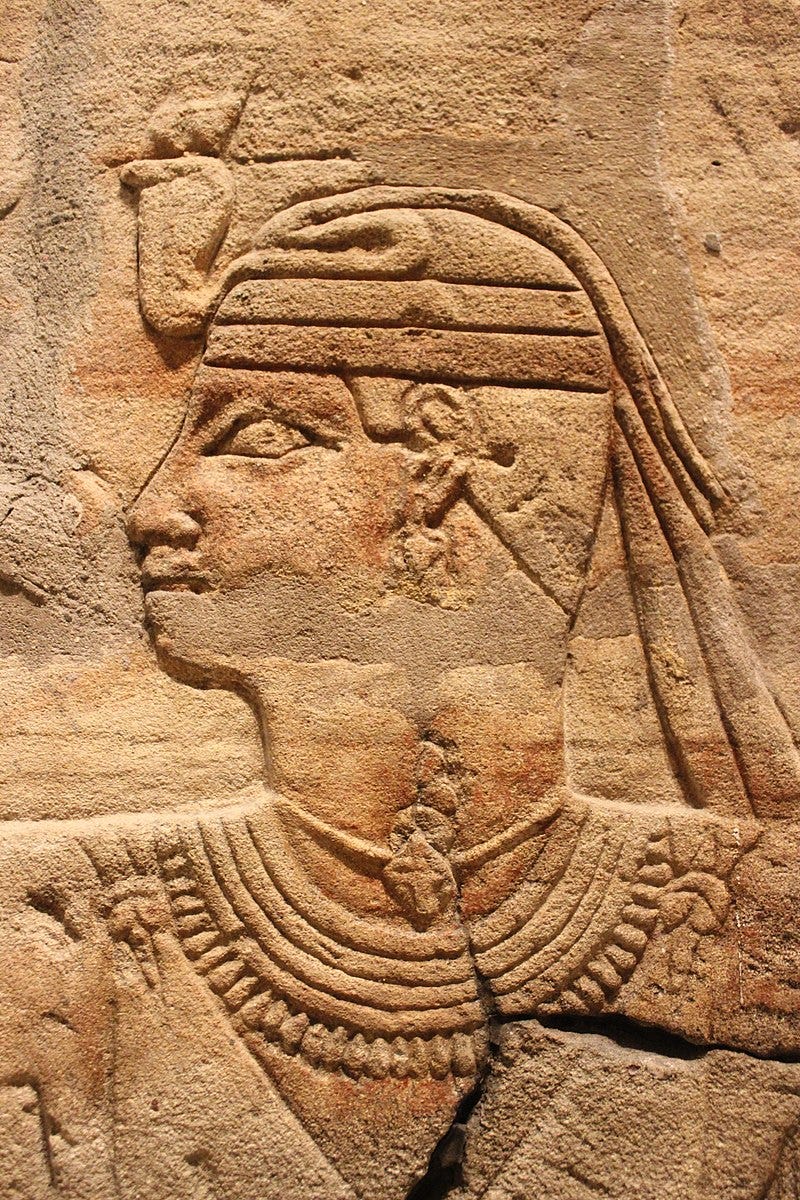
When the Assyrian Empire, one of the greatest military machines of its time, set its sights on Kemet, Taharqa didn't cower.
He didn't negotiate.
He didn't send tribute hoping they'd leave him alone.
He fought back and won.
In 701 BCE, when the Assyrians laid siege to Jerusalem, it was Taharqa's army that broke the siege and saved the city. The Bible mentions this explicitly in 2 Kings 19:9 and Isaiah 37:9, calling him "Tirhakah, king of Ethiopia." This victory sent shockwaves through the ancient world.

When Esarhaddon of Assyria invaded Kemet proper in 674 BCE, Taharqa and his forces defeated them so completely that Babylonian records suggest it may have been one of Assyria's worst military disasters. The Assyrians were so overconfident they didn't even bring their full army.
Taharqa taught them a lesson.
Taharqa appointed governors, collected taxes, moved armies, and managed trade routes across this vast territory. The logistics alone required governmental sophistication that most civilizations couldn't match.
Taharqa embodied everything you want in a leader:
King Tutankhamun.

I know what you're thinking:
Here's the uncomfortable truth about King Tut:
• He became pharaoh at eight years old
• He died ten years later having accomplished nothing
• He was a puppet of the corrupt Amen priesthood and his political overseers
• His "reign" was actually a counter-revolution that set Kemet back
• Everything we celebrate about him was created by other people
King Tut did nothing of political or cultural significance.
He was a child who was likely placed on the throne by the same priests who murdered his father, Akhenaten, specifically so they could reclaim the power they had lost during the Amarna Period.
Tut wasn't a pharaoh—he was a puppet whose strings were pulled by unseen hands.
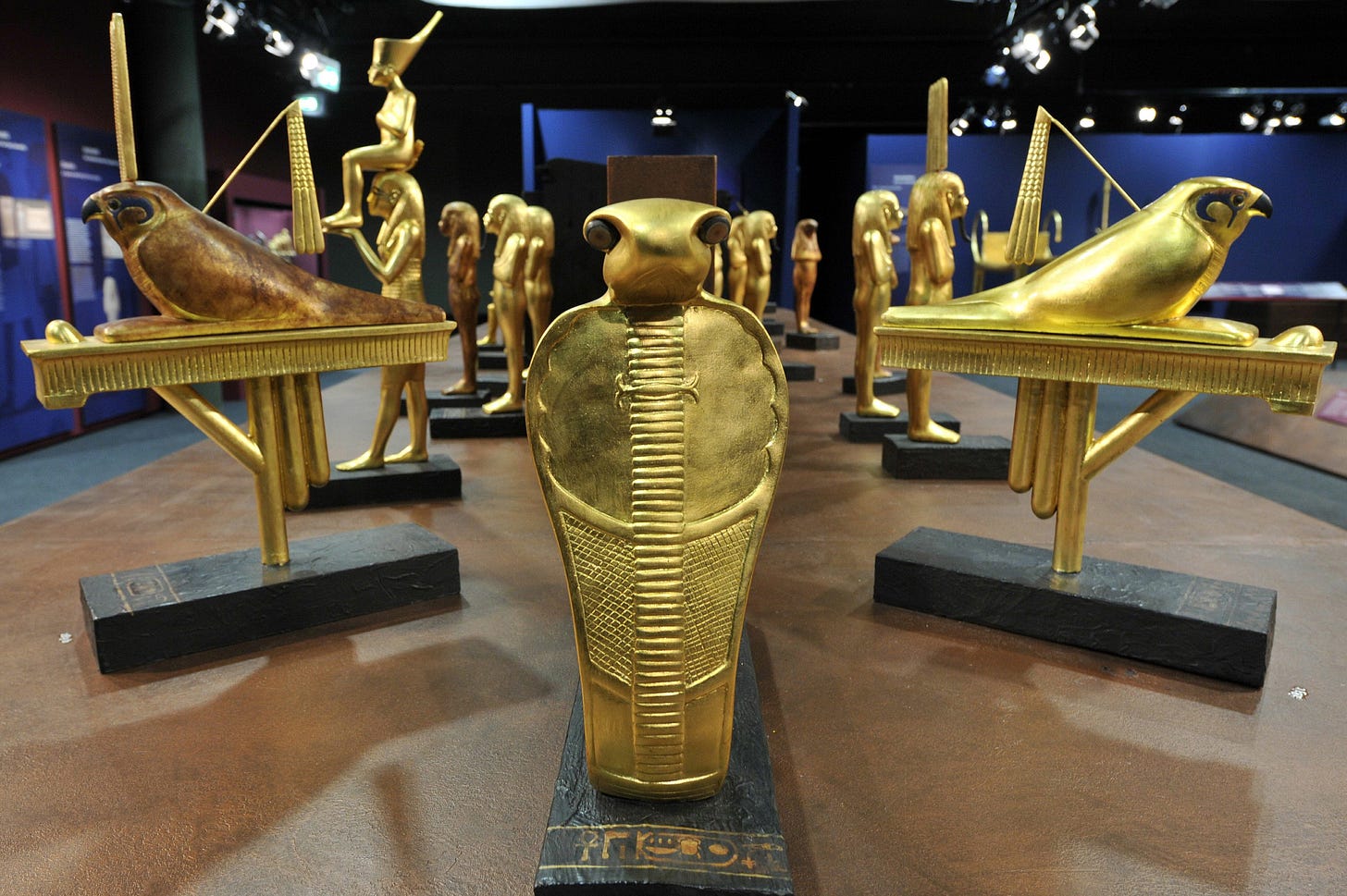
It reflects the wealth and power of the priesthood that controlled him and the artistry of the anonymous craftsmen who labored in the royal workshops.
The irony is that King Tut has become the most famous pharaoh in modern times precisely because his little tomb was left undisturbed, probably because no one in ancient times was interested robbing it.
Think about that for a moment.
The great pharaohs—the ones who actually built monuments, led armies, expanded empires, and transformed civilizations—their tombs were emptied long ago because everyone knew they contained treasures worthy of their achievements.

We study everything so we know what to do and what not to do.
The celebration of King Tut in popular culture represents everything wrong with how ancient Kemet is presented to the world.
Instead of celebrating the pharaohs who actually built the civilization, who led armies, who represent true African genius, we get obsessed with a boy king who was essentially a placeholder.
I often refer to King Tut as the Gerald Ford of pharaohs.
Both were political pawns who did nothing to enhance the quality of life during their reign.
Meanwhile, pharaohs like Taharqa—who controlled a quarter of the known world, who defeated the greatest empire of his time, who restored Kemetic culture after centuries of decline—remain virtually unknown outside of academic circles.
The people who control these narratives, who decide which artifacts get displayed and how they get presented, have a vested interest in promoting a version of history that minimizes African achievement.
They would rather you marvel at the golden trinkets of a powerless child than learn about the African king who defeated the Assyrian Empire.
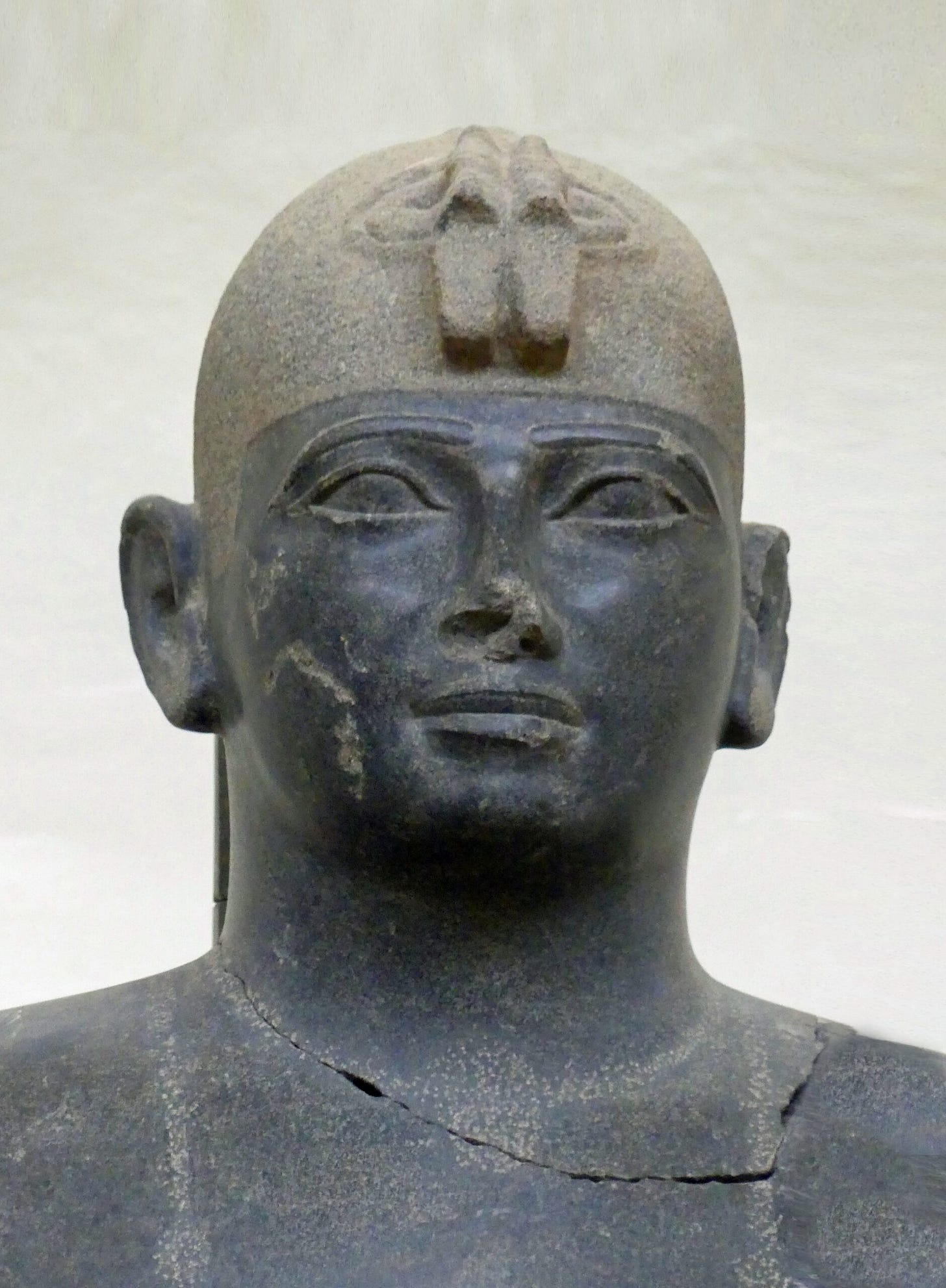
King Tut represents the opposite: powerlessness, manipulation by corrupt interests, the elevation of symbols over substance, the celebration of wealth that was created by others.
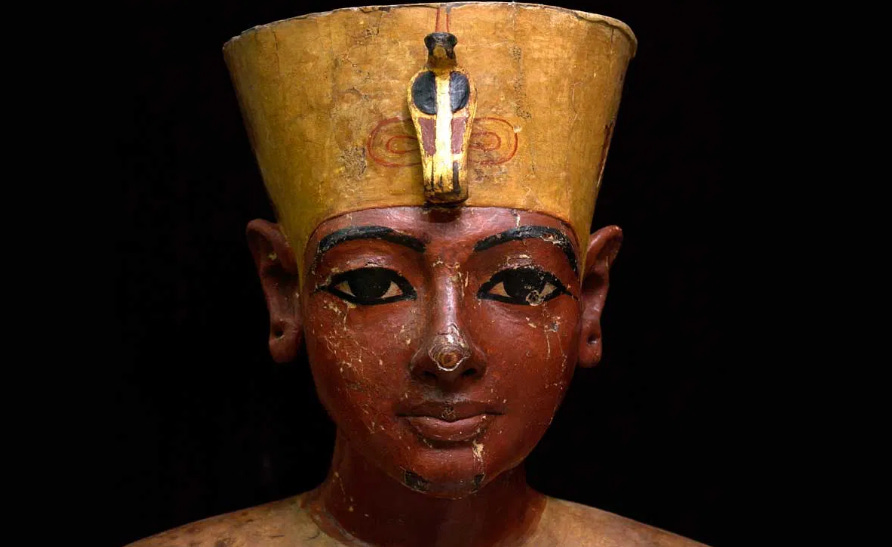
When I think about the lessons we need to take from ancient African history, Taharqa shows us what's possible when we embrace our power and use it wisely.
Tut shows us what happens when we allow others to control our narrative and celebrate the wrong things for the wrong reasons.
That's why I chose Taharqa as the ideal candidate to name a battleship after.
And that's why I think it's time we started telling the real stories about who built what, who accomplished what, and who should be remembered as the embodiment of African excellence.
Once you've held the fragments of that greatness in your own hands, walked through the spaces where it happened, and reconstructed the monuments they built with your own time, talent and treasure—you understand that we're not just talking about ancient history.
We're talking about what we're capable of when we remember who we really are and have the courage to act with conviction.
Thank you for reading
Anthony Browder
Founder of IKG
PS
I will be delivering a talk in Paris on 25th July, as part of my Why Kemet Matters tour to London and Paris,
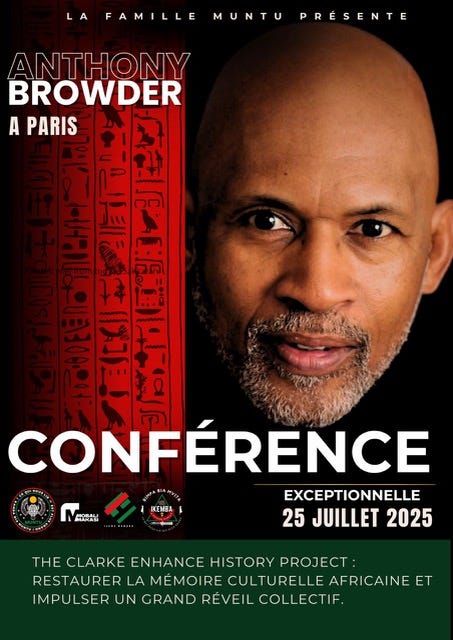
If you are in the area, I would love to connect with you at the event.
Get tickets here:
https://my.weezevent.com/conference-anthony-browder
Also:
If you had to name a battleship after a pharaoh who represents power—which pharaoh would you choose?

That was one of the best questions anyone has asked me on a podcast.“If you had to name a battleship after a pharaoh who represents power—which pharaoh would you choose?"
And it came from Brother Mobali Makasi during our live podcast interview in Paris, France.
That's the kind of question that cuts right to the heart of what really matters.
But when it comes to the greatest pharaoh, I'm prejudiced.
And my prejudice comes from a very specific place—fifteen years of excavating 25th Dynasty tombs in South Asasif on the West Bank of Luxor, Egypt.
I spent over a decade and a half digging through 2,700 tons of debris, cataloging over 34,000 fragments, and reconstructing the temple tombs of Kushite nobles who served under one of the greatest African dynasty ever to rule Kemet (Egypt).

When you've held pieces of limestone carved 2,700 years ago in your hands, walked through pillared halls that ancient Africans built, and stood before the spirit door of Ausar in Karakhamun's tomb—a door that hadn't been accessed for over 2,000 years—you develop a profound appreciation for the dynasty these men served.

Meaning, I can only have one answer.
My answer is Taharqa.

And I told Mobali exactly why.
Taharqa was the last major king of the 25th Dynasty, and he represents everything a pharaoh should embody.
He understood that power means nothing without purpose, that strength means nothing without the will to use it for the protection and prosperity of your people.
Here's what makes Taharqa extraordinary:
• He united Kemet and Kush under one crown• He restored 2,000 years of Kemetic history and culture
• He controlled one quarter of the African continent and the so-called Middle East
• He's the only king of Kemet mentioned by name in the Bible
• He personally saved Jerusalem from the Assyrians
But let me tell you what the history books often leave out.
Taharqa ruled during a renaissance that put Kemet back on top of the world.
The 25th Dynasty didn't just conquer Kemet—they restored it.
When Taharqa took the throne in 690 BCE, he inherited an empire that stretched from the Mediterranean Sea to the heart of Africa. The Nile Valley empire was as large as it had been since the New Kingdom, over 500 years earlier.
This was, as John Henrik Clarke said, ‘Africa's last great walk in the sun’.
The 25th Dynasty was the last time in recorded history that African people were unquestionably the most powerful human beings on the planet.
During my excavations, I've seen firsthand the level of craftsmanship and artistry that flourished under the 25th Dynasty. The temple tombs I've excavated in South Asasif are confirmation of African genius and represents a civilization at its peak.

Taharqa's building projects were legendary.
Taharqa restored existing temples throughout the Nile Valley and built new ones that still stand today.
His additions to the Temple at Karnak are among the most impressive architectural achievements in human history.

The new temple he built at Kawa and the temples at Jebel Barkal were statements of power and confirmation that African civilization was alive, thriving, and dominant.

The military genius behind the legend
But what really sets Taharqa apart is that he understood that sometimes you have to fight to protect what you've built.When the Assyrian Empire, one of the greatest military machines of its time, set its sights on Kemet, Taharqa didn't cower.
He didn't negotiate.
He didn't send tribute hoping they'd leave him alone.
He fought back and won.
In 701 BCE, when the Assyrians laid siege to Jerusalem, it was Taharqa's army that broke the siege and saved the city. The Bible mentions this explicitly in 2 Kings 19:9 and Isaiah 37:9, calling him "Tirhakah, king of Ethiopia." This victory sent shockwaves through the ancient world.

When Esarhaddon of Assyria invaded Kemet proper in 674 BCE, Taharqa and his forces defeated them so completely that Babylonian records suggest it may have been one of Assyria's worst military disasters. The Assyrians were so overconfident they didn't even bring their full army.
Taharqa taught them a lesson.
The empire that controlled a quarter of the known world
Let me put Taharqa's power in perspective. At its height under his rule, the 25th Dynasty controlled territory from the Mediterranean coast down to modern-day Sudan, from the Red Sea to the western desert. We're talking about an empire that covered roughly 25% of the African continent and significant portions of what we now call the Middle East.Taharqa appointed governors, collected taxes, moved armies, and managed trade routes across this vast territory. The logistics alone required governmental sophistication that most civilizations couldn't match.
Taharqa embodied everything you want in a leader:
- Vision
- Power
- The will to fight, and
- The wisdom to build something lasting.
The Worst Pharaoh: A Truth About King Tut
My answer surprised him.King Tutankhamun.

I know what you're thinking:
- King Tut is the most famous Pharaoh!
- There are exhibitions about him all over the world!
- His golden mask is one of the most recognizable artifacts in history!
Here's the uncomfortable truth about King Tut:
• He became pharaoh at eight years old
• He died ten years later having accomplished nothing
• He was a puppet of the corrupt Amen priesthood and his political overseers
• His "reign" was actually a counter-revolution that set Kemet back
• Everything we celebrate about him was created by other people
King Tut did nothing of political or cultural significance.
He was a child who was likely placed on the throne by the same priests who murdered his father, Akhenaten, specifically so they could reclaim the power they had lost during the Amarna Period.
Tut wasn't a pharaoh—he was a puppet whose strings were pulled by unseen hands.
The Real Story Behind the Golden Mask
All those golden artifacts, that magnificent burial chamber, the craftsmanship that people travel around the world to see in museums—none of that reflects anything Tutankhamun accomplished.
It reflects the wealth and power of the priesthood that controlled him and the artistry of the anonymous craftsmen who labored in the royal workshops.
The irony is that King Tut has become the most famous pharaoh in modern times precisely because his little tomb was left undisturbed, probably because no one in ancient times was interested robbing it.
Think about that for a moment.
The great pharaohs—the ones who actually built monuments, led armies, expanded empires, and transformed civilizations—their tombs were emptied long ago because everyone knew they contained treasures worthy of their achievements.
Why This Matters for How we Understand African History
Sankofa means we study both the good and the bad.
We study everything so we know what to do and what not to do.
The celebration of King Tut in popular culture represents everything wrong with how ancient Kemet is presented to the world.
Instead of celebrating the pharaohs who actually built the civilization, who led armies, who represent true African genius, we get obsessed with a boy king who was essentially a placeholder.
I often refer to King Tut as the Gerald Ford of pharaohs.
Both were political pawns who did nothing to enhance the quality of life during their reign.
Meanwhile, pharaohs like Taharqa—who controlled a quarter of the known world, who defeated the greatest empire of his time, who restored Kemetic culture after centuries of decline—remain virtually unknown outside of academic circles.
The Economics of Historical Manipulation
There's a reason King Tut exhibitions travel the world making millions of dollars while you'll never see a Taharqa exhibition at your local museum.The people who control these narratives, who decide which artifacts get displayed and how they get presented, have a vested interest in promoting a version of history that minimizes African achievement.
They would rather you marvel at the golden trinkets of a powerless child than learn about the African king who defeated the Assyrian Empire.
Why Taharqa Represents Our Best and Tut Represents our Worst
Taharqa embodied everything that makes a great leader: vision, courage, the ability to unite people across vast territories, the wisdom to restore and build upon the achievements of the past while creating something new and powerful.
King Tut represents the opposite: powerlessness, manipulation by corrupt interests, the elevation of symbols over substance, the celebration of wealth that was created by others.

When I think about the lessons we need to take from ancient African history, Taharqa shows us what's possible when we embrace our power and use it wisely.
Tut shows us what happens when we allow others to control our narrative and celebrate the wrong things for the wrong reasons.
That's why I chose Taharqa as the ideal candidate to name a battleship after.
And that's why I think it's time we started telling the real stories about who built what, who accomplished what, and who should be remembered as the embodiment of African excellence.
Once you've held the fragments of that greatness in your own hands, walked through the spaces where it happened, and reconstructed the monuments they built with your own time, talent and treasure—you understand that we're not just talking about ancient history.
We're talking about what we're capable of when we remember who we really are and have the courage to act with conviction.
Thank you for reading
Anthony Browder
Founder of IKG
PS
I will be delivering a talk in Paris on 25th July, as part of my Why Kemet Matters tour to London and Paris,

If you are in the area, I would love to connect with you at the event.
Get tickets here:
https://my.weezevent.com/conference-anthony-browder
Also:
- Join me on my field Trips in Washington DC: Egypt on the Potomac
- And (if you haven't already), check out the online Clarke Enhance History Project

